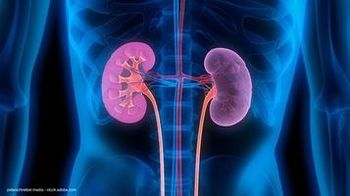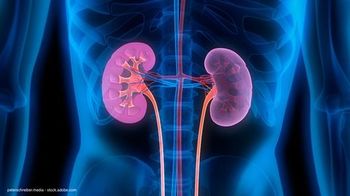
Stones, higher uric acid excretion are unrelated
Atlanta-Unselected calcium oxalate stone formers have neither elevated urinary uric acid excretion nor an increased prevalence of hyperuricosuria compared with age-matched controls when the two groups are evaluated under conditions of strict dietary control, according to the results of a study undertaken at Wake Forest University, Winston-Salem, NC.
Data were presented here at the AUA annual meeting.
"These findings emphasize the importance of dietary evaluation and counseling in the management of stone formers," said Vernon M. Pais, Jr, MD, assistant professor of urology, University of Kentucky, Lexington, who conducted the study while a fellow at Wake Forest working with Dean G. Assimos, MD, and Ross P. Holmes, PhD.
Three consecutive 24-hour urine samples were collected from each subject and were assayed for urinary uric acid and creatinine (Cr). Mean 24-hour urinary uric acid excretion was evaluated for each subject and was indexed to creatinine to account for differences between subjects in lean body mass.
The mean 24-hour urinary acid excretion was significantly lower (p<.05) in the stone formers compared with the controls: 337±64 mg/g Cr vs. 379±76 mg/g Cr, respectively. Subgroup analysis dividing the two populations by gender also showed no differences between the stone formers and controls among either males or females.
Mean 24-hour urinary uric acid excretion rates ranged from about 250 to 625 mg/g Cr among the stone formers and from about 250 to 700 mg/g Cr in the control group. Hyperuricosuria, defined by 24-hour urinary uric acid excretion in excess of two standard deviations above the mean (>531 mg/g Cr ), was found in two controls (3%) and only in one stone former (2%).
"Unfortunately, our protocol did not allow for retrospective evaluation of urinary uric acid or serum uric acid levels in our subjects prior to the dietary intervention, and so we cannot evaluate or comment on any absolute changes effected by dietary control," Dr. Pais observed.
Previous conclusions contradicted
Previous studies have suggested that hyperuricosuria is more common in calcium oxalate stone formers relative to the general population and have reported prevalence rates between 13% and 26% among stone formers. In addition, treatment of documented hyperuricosuria has been demonstrated in well-designed, placebo-controlled studies to reduce the incidence of and delay the time until stone recurrence. However, studies evaluating nonselective treatment of calcium oxalate urolithiasis for presumed hyperuricosuria have yielded mixed results.
"Dietary indiscretion may explain the variability in outcomes in the latter studies, since subjects typically were allowed to partake in self-selected diets. By assessing the tendency for hyperuricosuria in calcium oxalate stone formers on strict dietary control, our study aimed to explore that hypothesis and rule out the possibility that there are intrinsic differences in these populations," Dr. Pais said.
Newsletter
Stay current with the latest urology news and practice-changing insights — sign up now for the essential updates every urologist needs.

















